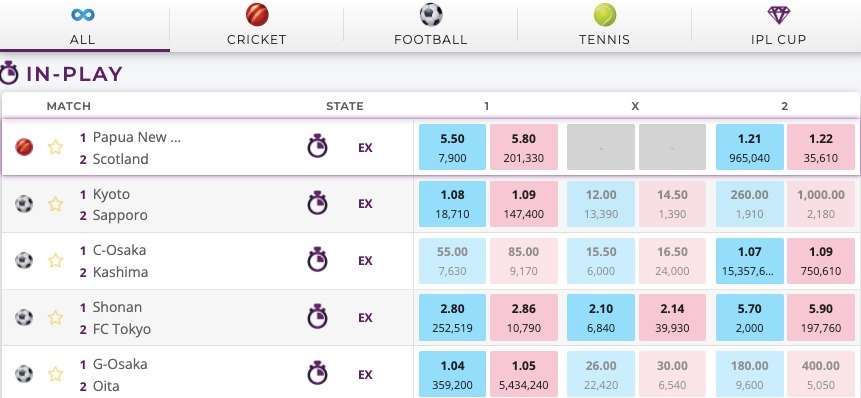Sports betting can be done using two major mediums. The first is through the traditional bookmaker and the other is via a betting exchange.
In the old-fashioned way, a bookmaker offers odds on outcomes of events to bettors. If the punters’ selection wins, the bookmaker pays them the winnings and if the bet is lost, the bookmaker keeps the stake.
For instance, a bookmaker offers odds of 2.0 on India beating Pakistan. If a bettor wages INR 100 on this outcome and India win, he will receive INR 200 from the bookmaker. But if India lose, the bookmaker will take the INR 100.
This was a long-established method of betting for years until the turn of the century when the first betting exchanges cropped up.
What is a betting exchange?
A betting exchange is a marketplace that allows players to bet against other players instead of a bookmaker.
In simple terms, the betting exchange pairs bettors against each other for a bet to happen and even lets the bettors set their own odds.
Let’s try to understand this with the India vs Pakistan cricket match example.
The first bettor says India will win and bets INR 100 on odds of 2.0 while the second bettor thinks India will lose and matches it with INR 100.
If India win, the second bettor pays the first bettor INR 100 and if India lose, it’s vice-versa.
This is exactly how a betting exchange works. It finds two players with differing opinions on outcomes and puts them up against each other, all while matching the stake and odds.
In a betting exchange, bettors can bet on an outcome called ‘back betting’, or bet against an outcome, which is known as ‘lay betting’.
What is back betting?
Back betting is essentially backing an event to happen.
Let’s assume you back India to defeat Pakistan with odds of 2.0 and a stake of INR 100.
If India win, you will be paid INR 200 (initial stake of 100 + 100 profit). This extra INR 100 profit will come from the opposing user on the betting exchange.
In betting exchanges, bettors can change the odds as per their liking and hope that another user on the platform lays their bet or bets against it.
If no user accepts and lays your odds, the bet won’t be placed, and the INR 100 stake will be returned.
Now, let’s understand how you can lay a bet.
What is lay betting?
In a lay bet, you wager on an outcome to not occur.
This means you become the bookmaker and bet against events.
Imagine you lay a bet of INR 100 on India to lose the match with the odds of 1.5.
If India lose, you would take away the opposite user’s stake, which is INR 100.
On the flip side, if India win, you are liable to pay only the winnings to the winner, which would be INR 50 (at 1.5 odds). This is called your liability.
You would get the remaining INR 50 back from the initial stake.
If your liability is more than your stake (in the case of odds over 2.0), the amount will be deducted from your website account.
However, betting exchanges only allow you to accept stakes when the amount in your account can cover the liability.
How do betting exchanges make money?
Betting exchanges make money by charging a small commission on the users’ winnings. This fee is for providing a platform for the bet to take place.
Different websites have a different commission margin, but it usually varies between two per cent and five per cent.
Although this takes a small amount from the purse, using betting exchanges can prove to be more profitable than a bookmaker.
Betting exchange provides a fairer way of betting since bookmakers usually give out false odds to make profits.
